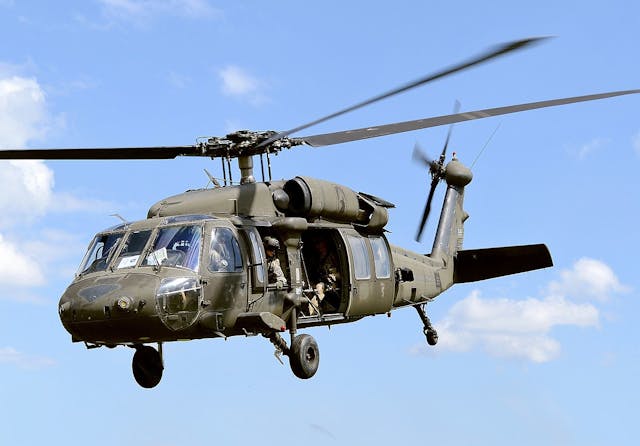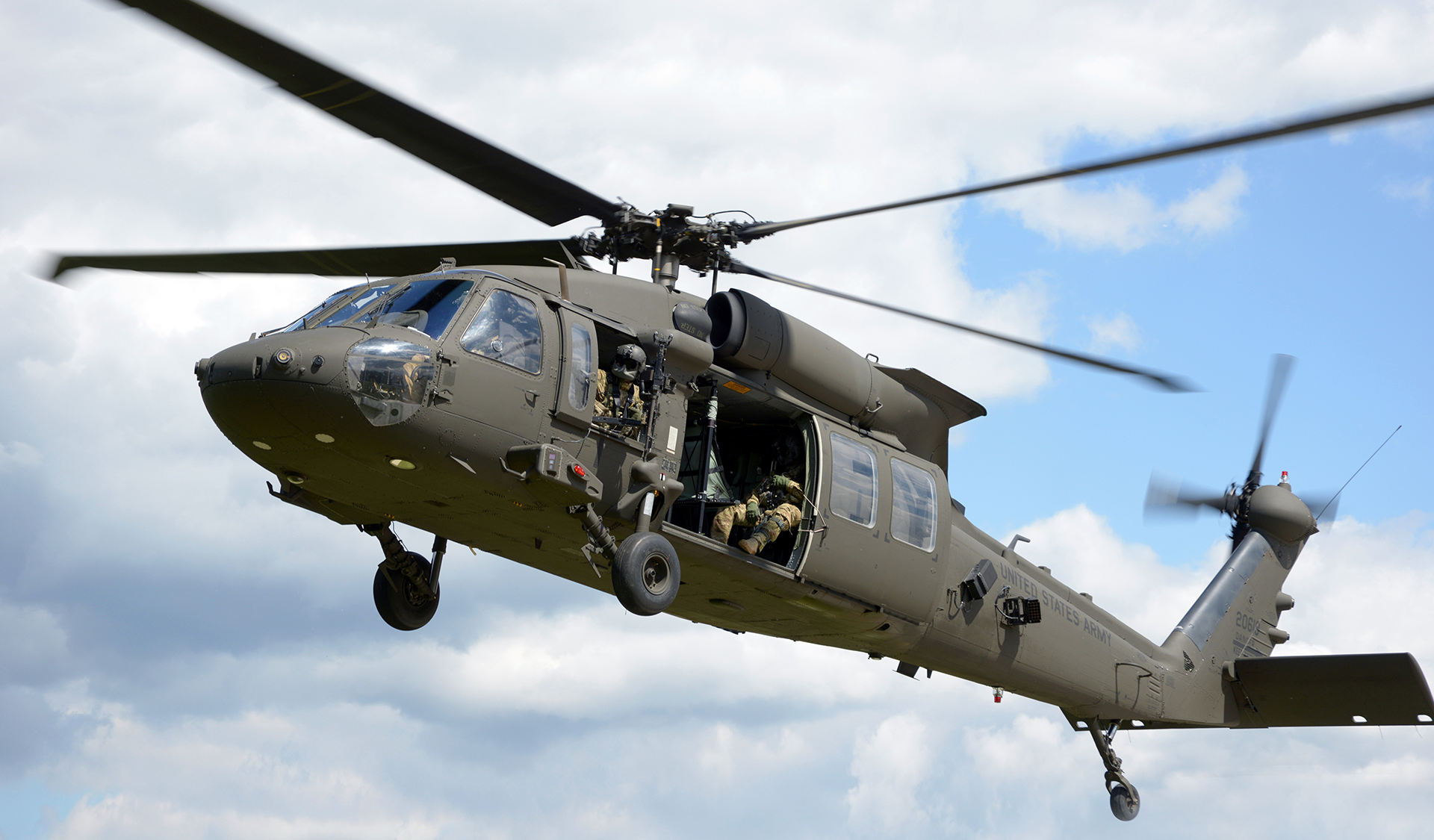Discover the Blackhawk Helicopter's Contributions to Modern Warfare and Peacekeeping
Discover the Blackhawk Helicopter's Contributions to Modern Warfare and Peacekeeping
Blog Article
Exploring the Thrills and Innovations of the Blackhawk Helicopter
The Blackhawk helicopter stands as a testament to military aeronautics's development, combining technological improvements with useful applications. Since its intro in the 1960s, it has transformed the landscape of airborne support, flaunting functions that improve its performance in different operational functions. As we explore its historic significance and crucial developments, one must think about just how forthcoming growths may redefine its capabilities. What lies in advance for this renowned aircraft, and how will arising technologies shape its future in army procedures?
Background of the Blackhawk Helicopter
Because its creation in the 1960s, the Blackhawk helicopter has played an essential duty in modern military aviation. Created by Sikorsky Aircraft, the UH-60 Blackhawk was developed to meet the united state Military's need for a versatile utility helicopter efficient in performing a variety of objectives, including army transport, medical emptying, and freight airlift. The style was a reaction to the restrictions of earlier helicopters, especially in regards to survivability, rate, and ability to move.
The Blackhawk made its first flight in 1974 and soon got in service in 1979. Its intro noted a substantial advancement in helicopter technology, featuring a two-rotor system that improved performance and stability. The airplane's rugged building and advanced avionics allowed it to operate effectively in diverse settings and problems.
Throughout the years, the Blackhawk has been continuously upgraded, including lessons gained from numerous fight circumstances. Its implementation in problems such as the Gulf Battle, Somalia, and the War on Terror more strengthened its credibility as a crucial property. The Blackhawk's tradition is characterized by its versatility and strength, making it a foundation of military aeronautics for years.
Key Features and Requirements
The Blackhawk helicopter is differentiated by its robust layout and advanced technological features, which jointly improve its functional capacities. Created mainly for energy objectives, the Blackhawk flaunts a maximum launch weight of about 22,000 pounds, permitting it to bring significant payloads while keeping agility.
Outfitted with 2 General Electric T700-GE-701C engines, the Blackhawk accomplishes a maximum rate of around 183 knots and a variety of 368 nautical miles - Blackhawk Helicopter. Its state-of-the-art rotor system features a four-blade major rotor and a four-blade tail rotor, ensuring security and ability to move in various flying problems
The helicopter's cabin can suit approximately 11 troops or different freight configurations, showcasing versatility in objective accounts. Additionally, the Blackhawk is created with sophisticated avionics, including electronic trip controls and an extensive cockpit display screen, enhancing pilot situational understanding.
For boosted survivability, the Blackhawk integrates ballistic armor and self-sealing fuel containers. Its ability to operate in diverse environments, from deserts to icy surfaces, better solidifies its credibility as a trusted system for army and humanitarian procedures alike. The Blackhawk's mix of power, durability, and flexibility makes it a keystone of modern-day aerial capabilities.
Improvements in Innovation
Technologies in modern technology have actually dramatically improved the capacities of the Blackhawk helicopter, guaranteeing it continues to be at the leading edge of military aviation. One of one of the most significant improvements is the integration of advanced avionics systems, which give improved situational understanding with real-time data handling and display. This modern technology allows pilots to navigate complex settings extra properly, enhancing mission success prices.

Furthermore, the introduction of digital fly-by-wire systems has revolutionized the control mechanisms of the Blackhawk, giving smoother handling and increased responsiveness. These systems facilitate advanced ability to move, necessary in high-stakes situations. Finally, improvements in interaction and networking innovations enable smooth control among devices, improving overall functional efficiency. Jointly, these technological innovations make sure that the Blackhawk helicopter remains a crucial asset in modern army operations. check this
Duties in Military Operations
With advanced innovation improving its capabilities, the Blackhawk helicopter plays a multifaceted role in military operations. Largely, it is employed for army transport, making it possible for quick deployment and extraction of personnel in numerous combat scenarios. Its large cabin can accommodate approximately 11 soldiers, making it a vital property for unique operations and large goals.
Additionally, the Blackhawk functions as a medevac platform, furnished to move wounded soldiers promptly and efficiently from the battlefield to medical facilities - Blackhawk Helicopter. Its convenience reaches logistical assistance, where it lugs products and devices vital for sustaining military operations in remote locations

The helicopter is additionally instrumental in reconnaissance goals, giving airborne monitoring and intelligence-gathering capabilities. Its capability to operate in diverse settings-- varying from metropolitan setups to extreme terrains-- more solidifies its relevance on the field of battle.
Additionally, the Blackhawk can be outfitted with advanced weapons, permitting it to involve in combat and offer close air support. This flexibility emphasizes the helicopter's essential role in contemporary military strategies, making it an important element of armed forces worldwide.
Future Dopes and Innovations
Improvements in innovation promise to usher in a brand-new era for the Blackhawk helicopter, boosting its abilities and functional effectiveness. As the army landscape develops, so too discover this does the emphasis on incorporating sophisticated technologies into rotary-wing airplane. Future advancements for the Blackhawk might consist of improvements in avionics, such as advanced trip control systems and improved situational understanding tools powered by man-made knowledge. These advancements will certainly help with extra specific navigating and decision-making in intricate atmospheres.
Additionally, the combination of unmanned systems is on the perspective, potentially enabling for manned-unmanned teaming procedures that can increase mission profiles and lower danger to employees. The Blackhawk's design is also anticipated to incorporate lighter and stronger materials, improving gas effectiveness and general efficiency.

Conclusion
To conclude, the Blackhawk helicopter represents a substantial achievement in armed forces air travel, defined by its flexibility and progressed technological functions. Its historic advancement reflects a regular feedback to operational requirements, improving capacities in various roles such as troop transportation and medevac procedures. Recurring innovations, including the combination of fabricated intelligence and hybrid-electric propulsion, promise to additional enhance the Blackhawk's efficiency and importance in future military engagements, ensuring its condition as an important asset on the field of battle.

With sophisticated innovation boosting its abilities, the Blackhawk helicopter plays a diverse duty in army procedures. (Blackhawk Helicopter)
Report this page